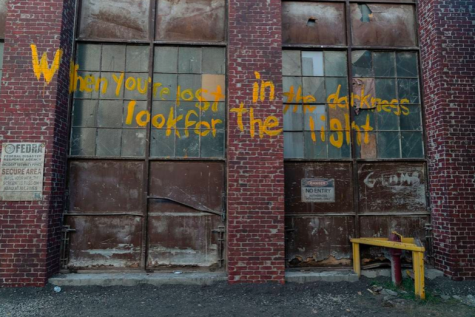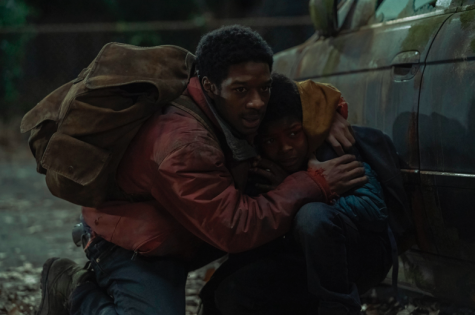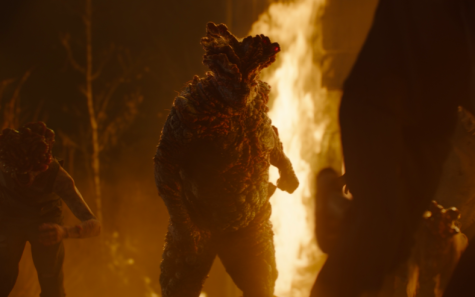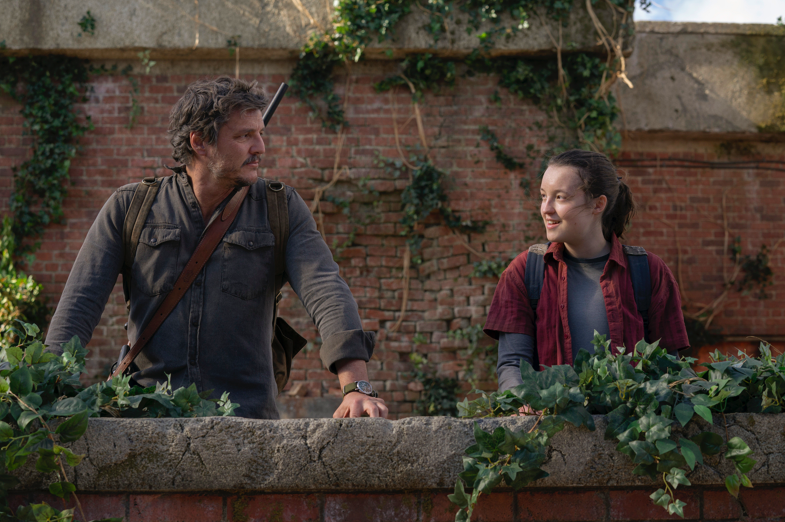“Last of Us” Review: The Revival of Apocalyptic Shows
HBO Max’s “The Last of Us” is a cinematic masterpiece that holds true to the original video game, while simultaneously adding more characterization and plot points.
WARNING: Do not read if you do not want to see spoilers for The Last of Us season one or if you are sensitive to gore and mature topics.
Coming out of the pandemic, we have returned to a mostly normal society. But what if society didn’t go back to normal? What if a disease developed to change our appearance, gnawed at our brains, and we did not have a vaccine to combat the spread of the disease? Combating life-threatening creatures and ruthless individuals, “The Last of Us” tackles a world in which these events play out in today’s modern society. Created as an adaptation from the original game, this series was released following the COVID-19 pandemic, contributing to its huge debut success. After its initial hit, as more people began to watch the series its popularity drastically increased due to the hard-hitting storyline.
The Last of Us series kicks off with a signature apocalyptic-takeover pilot episode. Our main character, Joel Miller, a construction worker in Texas, wakes up on his birthday, accompanied by his twelve-year-old daughter, Sarah, and his brother, Tommy. As these three go about their day, the cordyceps (infected) begin to display their first takeover. As Joel and his family attempt to flee from their hometown, they are confronted with a government soldier, who is ordered to kill them all to avoid the risk of them being infected, which results in Sarah’s death. Half-way into the pilot episode, this series blatantly lays out that no character is covered in plot armor and is susceptible to death at any moment. This overarching idea is carried throughout the series, which pulled on my heart strings as I watched.

Twenty years after the initial outbreak, we find Joel, who is now a reserved, rugged survivor, working in a military-run Boston. Joel is painted to be a person to fear, as his elusive reputation is mentioned throughout. As prickly as Joe is, he has a partner by the name of Tess. Tess and Joe, as black-market partners, land themselves a job for a group known as the Fireflies—a revolutionary militia group who fought against the Federal Disaster Response Agency (FEDRA). FEDRA is portrayed as an antagonist faction and is the ruling authority of most zones in the U.S. FEDRA, who was in charge of containing the cordyceps brain infection (CBI) outbreak, is the last remnant of the pre-outbreak U.S. government. However, corruption seems to have seeped into FEDRA and turned many against it as time goes on in the outbreak. This corruption led to FEDRA creating horrid working conditions for citizens and, in some zones, led to the rape and murder of citizens. This led many revolutionary groups to rise against them across the country. The series plays on the question of who are the real monsters: the infected or the humans?
The society created in The Last of Us seems outlandish on paper, but in reality, is completely plausible. The idea of morality is tested throughout the entire season. Characters are forced to make decisions that seem heinous, but with more consideration, their decisions make you question what you would do in their situation. Survival of the fittest is a key factor repeated as the reason certain characters are still alive in their apocalyptic world. As I watched the series, it became more and more difficult to blame certain “villain” characters because they are just acting in their best interest, or acting for the best interest of their group. Every person referenced has a backstory to why they are this way, which is what makes The Last of Us such an emotional series.
The series, after the initial pilot episode, seems to have a different focus in each hour-long episode. The episodes cover various topics such as LGBTQ+ and deaf representation, government corruption, anarchical and communist societies, alluded pedophilia, cannibalism, and much more. This vast range is compacted into nine episodes and allows the series to become even more complex, but these scenes are true to the original game the series was adapted from. There are scenes throughout the first season that are direct parallels to the game, following the same story lines and locations.

However, some aspects of the game are expanded in the show, specifically in the intensive insight into characters’ lives. For example, Sam and Henry were brothers in the original game that were attempting to escape Pittsburg, as a group of hunters had taken over and began to murder citizens. In the series adaptation, their characters are much more developed and create a bond with the viewer, making their characters more likable. Sam is changed to be a deaf young boy that was diagnosed with leukemia, requiring specific medication and treatment only the government could provide. FEDRA had all supplies of medication, which led to Henry giving up crucial resistance information in return for FEDRA providing Sam with treatment to keep him alive. This adds a layer of complexity in their characters and also continues to play on the theme of a person making a decision that will harm others for the survival of themselves or those they care for.
Having played the game years ago, watching this show gave me a sense of nostalgia—despite the changes—as I watched one of my favorite games turn into a cinematic masterpiece. The overall cinematography was impeccable and the prosthetics of the infected were grueling and oddly realistic. However, the infected did not receive enough screen time compared to the amount of work that went into creating the prosthetics. The series is in no way lacking action, but there were less than a handful of times the viewers actually got to see the creatures. Each time we did see a fight between the infected and the survivors, it was eye-catching and realistic enough to be compared to a horror film. I just wish they got more screen time appreciation, especially for the levels of infected creatures—the runners, stalkers, clickers, shamblers, bloaters, and the rat kings. Each level corresponds with how long the infected have been living and how they have advanced over time. The viewer is only shown the runners and a clicker in one scene, and the opportunity to show the different levels of the infection itself was missed in the show.

Overall, The Last of Us is the best original show HBOMax has produced. Zombie shows and movies are a classic and are in a field of their own. After the final seasons of “The Walking Dead,” many people considered these types of movies “cheesy” and having little storyline. However, between the detailed characters, realistic society, and terrifying monsters of “The Last of Us,” I believe this show has set a new standard for the timeless “zombie movies.” I hope this series becomes the model for future zombie films to raise their quality and restore their reputation.

Lydia Payne is the Prospective’s editor during her Junior year. This will be her 4th year in journalism and second year as an editor. She enjoys filling...






